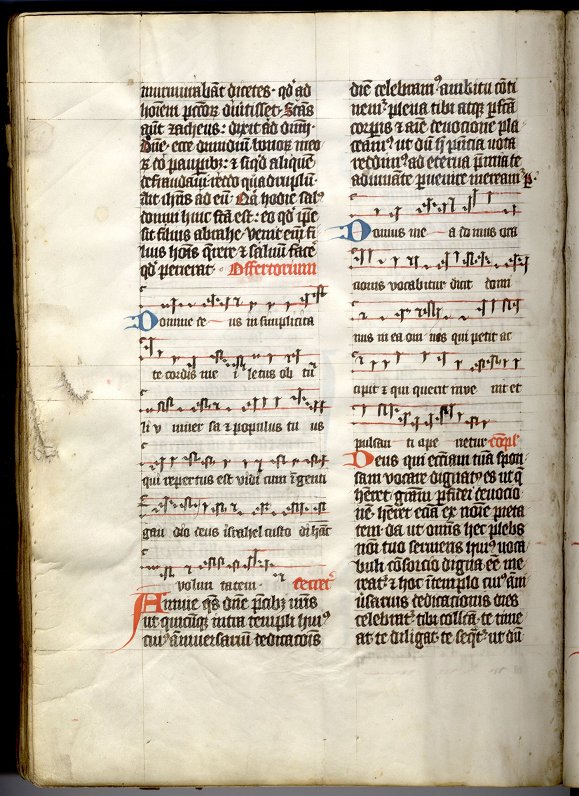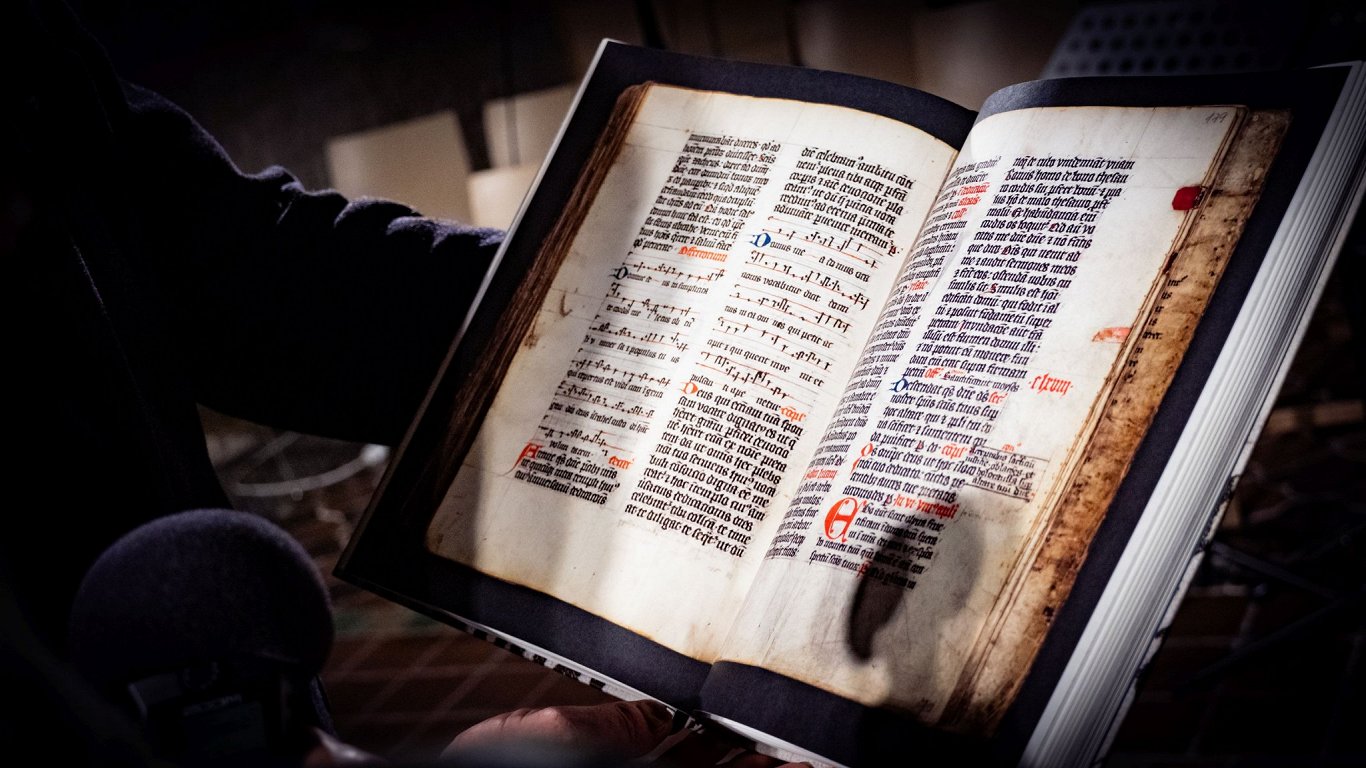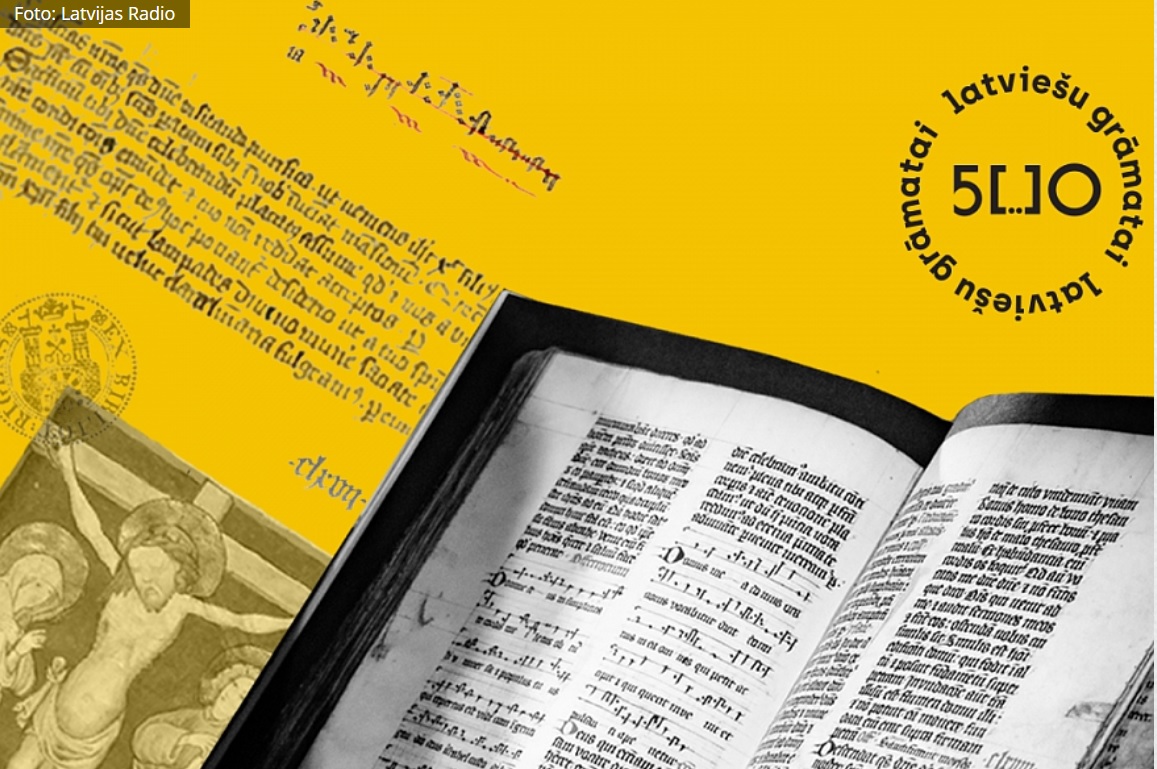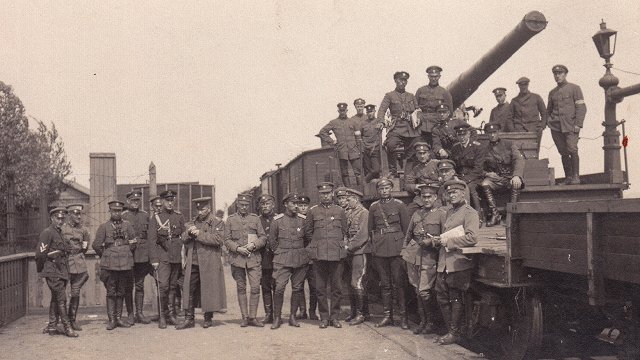More about the cycle of events can be discovered at the website https://www.gramatai500.lv and for more about the Latvian National Library and its constantly changing exhibitions and collections, visit: https://www.lnb.lv/.
Missale Rigense and music in medieval Rīga
To be informed or to experience – these are two very different dimensions how humans have perceived the world and everything around them in the past. When reflecting on history, the informative and factual dimension is predominant, but these are not the only possible dimensions. Indeed, the history of music offers opportunities to "experience the way things used to be".
This is what happens when an ancient recording becomes a sound, connecting two worlds – then and now. By listening, perceiving, perhaps even singing along, the experience of sound allows us to participate in this process on a completely different, more personal level. The oldest written record of Latvian music history, the 15th century manuscript Missale Rigense, offers such an opportunity.
As a cultural and historical phenomenon, the Gregorian chant occupies a unique place in the history of world music, but we have realised only relatively recently that the origins of Latvian professional music can also be traced back to the musical events of medieval Riga.

The Missale Rigense, which dates from the 1560s–90s, reveals not only that Gregorian chants played an important role in the musical life of medieval Riga, but also that they sounded slightly different here, with their own local musical version. Just as the same folk song can vary in its interpretation lyrically and melodically in different geographical locations.
As one of the few surviving liturgical manuscripts from medieval Livonia, it shows that the cultural life of medieval Riga was closely linked to the musical culture and religious life of Europe at that time. Riga Dome Cathedral had a vibrant musical life, comprising highly educated musicians with a fine perception of musical nuances and professional vocal skills.
The notated musical score of the Missale, on the other hand, reveals the presence of an oral tradition in the performance process. In particular, the numerous intonations of the chants, which record only the very beginning of the chant, are evidence that the chant was sung "by heart". This suggests the presence of a certain improvisatory practice and variability in the chants, which were not dogmatically reproduced but interpreted creatively. The manuscript provides an opportunity to substantiate this variability and proves once again that medieval chants are also subject to the law to which the living creative spirit of all humanity is subject: if something is alive and flourishing, it will evolve; only if it is dead and cold, will it remain stagnant and unchanging.
Missale Rigense tells of the musical and liturgical life in the Dome Cathedral of the Archbishop of Riga within the Metropolis of Livonia – Cathedral Church of St. Mary in the late Middle Ages, in which the members of the Riga Cathedral Chapter played an active role. The chant notation found alongside the texts of the prayers and readings was in Gothic horseshoe nail notation, which was in keeping with the wider regional context of this tradition. The musical marginalia and the numerous textual marginalia – short notes in the page margins – showed their strong practical significance for the liturgical rite.

The content recorded in the book revealed itself as a living text that was in flux, i.e. it could change over time. This is also evidenced by the multiple melodic versions of the same chant. The chants documented in the manuscript and the recently rediscovered chant marginalia provide a clear picture of the local Gregorian tradition in Riga, which is not distinctly different from the variants found in other late medieval manuscripts. Nevertheless, it is precisely the nuances that contain distinctly individual elements in terms of both the melody and rhythm of the chants.
This unique manuscript is also the oldest written record of music history in the whole of the Baltic region. It is a testimony that cannot only be seen, but also sung, heard and experienced.






























